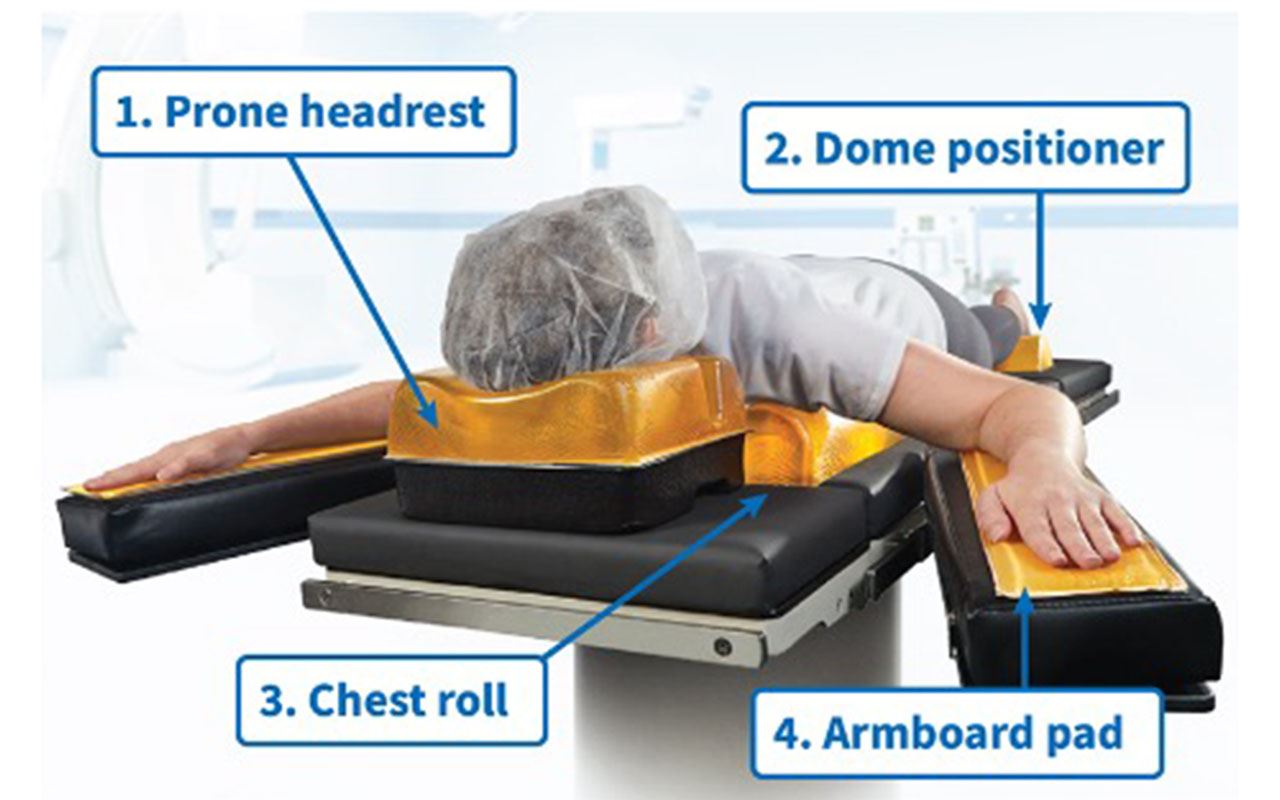-
Home
-
Effectively and Safely Position Patients in Prone for Treatment of ARDS
Effectively and Safely Position Patients in Prone for Treatment of ARDS
May 20, 2020

The increase of COVID-19’s prevalence in the healthcare system has spurred a multifaceted approach to dealing with the disease both from dynamic personnel positioning to obtaining and even creating supplies. Acute Respiratory Distress Syndrome (ARDS) is one complication in particular from COVID-19 that requires providers to broach patient care from all possible angles ranging from low-tech to advanced machinery. The prone position is the first and most manageable manner of approaching ARDS, and the right equipment comprised with staff know-how can improve patients’ chances of survival while also reducing collateral injury.
ARDS and Assistance Through Prone Positioning
ARDS is a serious lung condition that causes dangerously low blood oxygen levels in patients, and is typically a secondary result of a major illness such as severe pneumonia due to COVID-19 or traumatic injury. ARDS is caused by a build-up of fluid inside the alveoli, the lung’s air sacs. This syndrome can also cause breakdown of surfactant—a substance secreted by the lungs to keep the air sacs from collapsing. Both of these adverse effects prevent the lungs from filling properly and moving sufficient oxygen into the bloodstream and throughout the body.
Mechanical ventilation is widely perceived to be the main intervention to fight COVID-19 and the subsequent effects of ARDS, but a non-invasive solution exists to aid providers: gravity repositioning. However, gravity is also one of the culprits that contributes to ARDS complications in the first place. For example, normal bedding in everyday life is geared towards the supine position, or simply lying on one’s back. Unfortunately, the supine position utilizes gravity against patients as the buildup of fluid caused by ARDS collects on patients’ alveoli in the dorsal region and cannot be drained. Abdominal organs and heart weight also negatively contribute to breathing in the supine position, which leads to compressing already troubled lung tissue. In contrast to lying on one’s back, the prone position places patients face down leveraging gravity against fluid collection on alveoli. Consequently, regional lung inflation improves, effectiveness from ventilators increase, and .
Simple Solutions Still Require the Right Procedures and Equipment
Placing a patient into prone position to improve oxygenation and survival also requires care to turn the patient safely. Adverse conditions, contraindications, or safety concerns, including issues with spinal instability, burns or wounds, pelvic fractures, or life-threatening arrythmias call for caution even when positioning patients into prone, so providers should ensure the following:
- All tubes, lines, drains, etc., are positioned to accommodate rolling the patient with sufficient slack.
- The correct number of staff and associated equipment/apparatus are available to safely move the patient.
However, laying a patient down without proper positioning support can have adverse effects, especially when those suffering from ARDS need to be face-down for up to 16 hours a day. Part of this simple solution lies in the need for appropriate equipment to help patients avoid additional complications due to facial trauma, pressure injuries, or brachial plexus injury.

- Prone Headrests help protect the orbital and facial structure from pressure and trauma while keeping the head in a straight, neutral position during prone positioning. This allows the endotracheal tubes to be accessed through the channels on either side as well as from the bottom of the head rest.
- Dome Positioners help to prevent footdrop and reduce pressure on ankle and feet during extended time in prone.
- Chest Rolls can be placed under the torso to allow for optimal chest expansion or be placed under feet to protect from possible nerve damage and pressure.
- Armboard Pads offer anti-shear protection for the biceps, elbow, and forearm areas.
Prone positioning is an important element in reducing the severe effects of ARDS, and implementing best practices require proper positioning protocol and equipment so that further injury is not induced on patients.
Learn more about AliMed’s vast array of Emergency O.R. Supplies
And for more information on prone positioning, visit AliMed.com/prone-patient-positioning-blog/